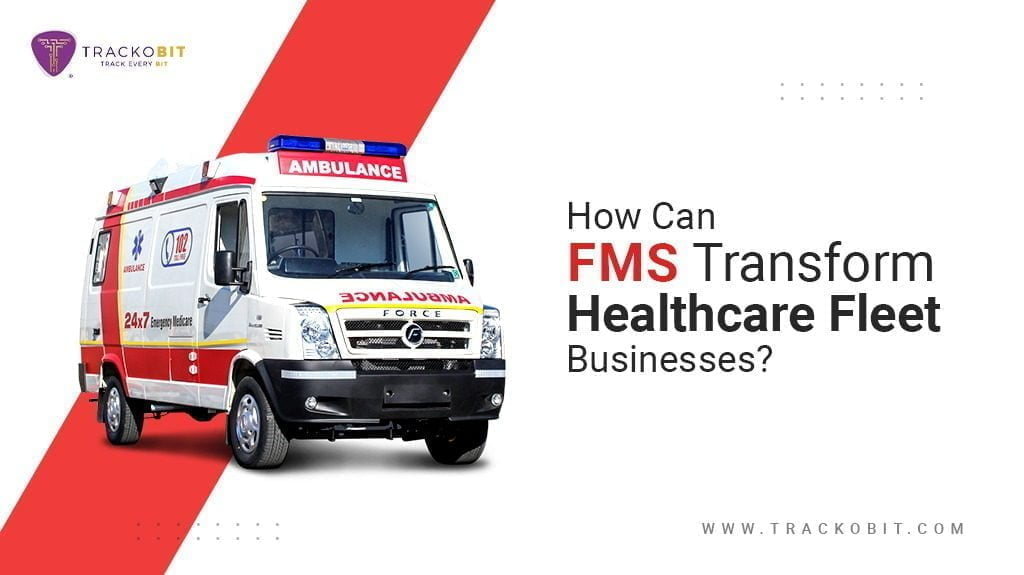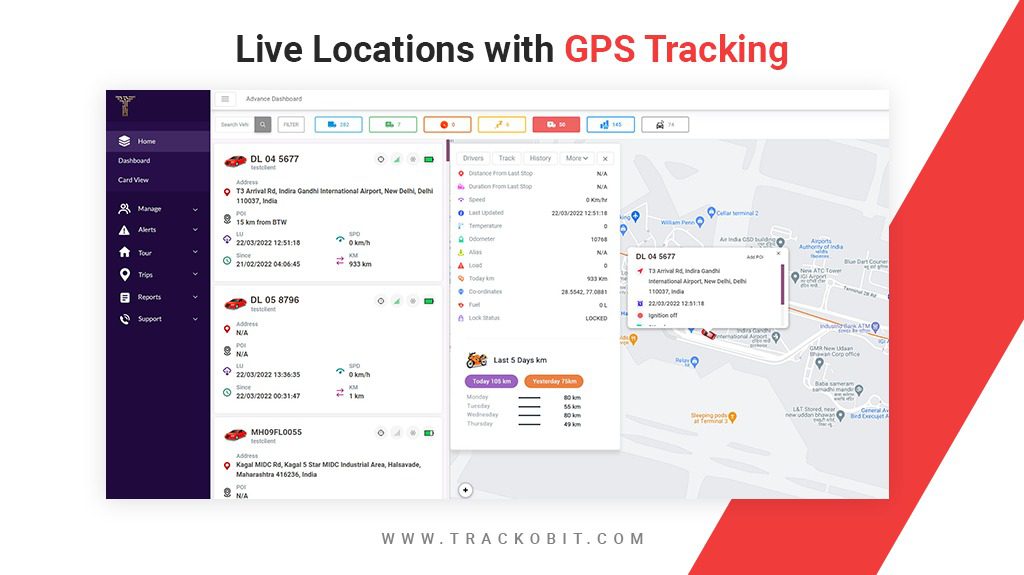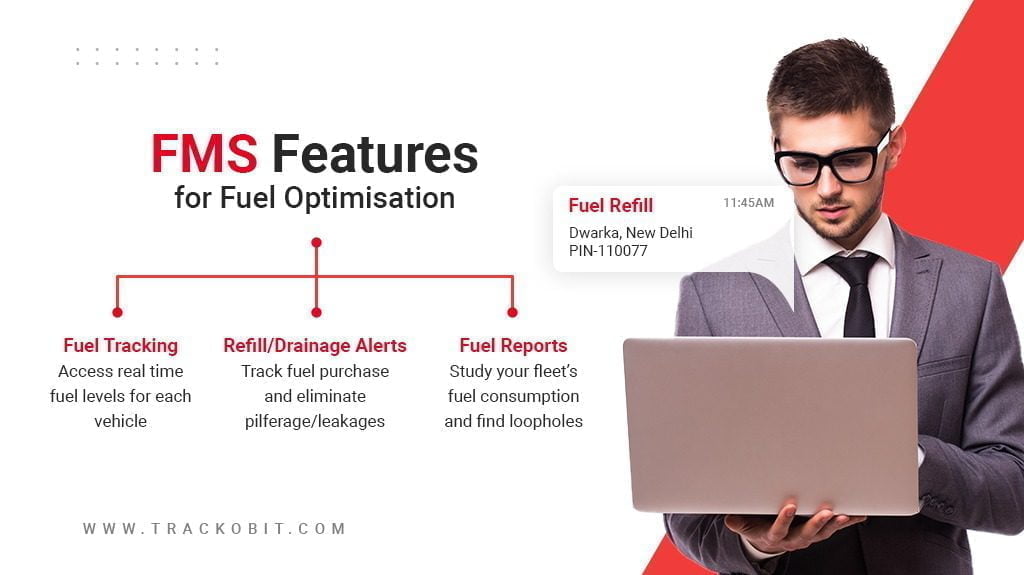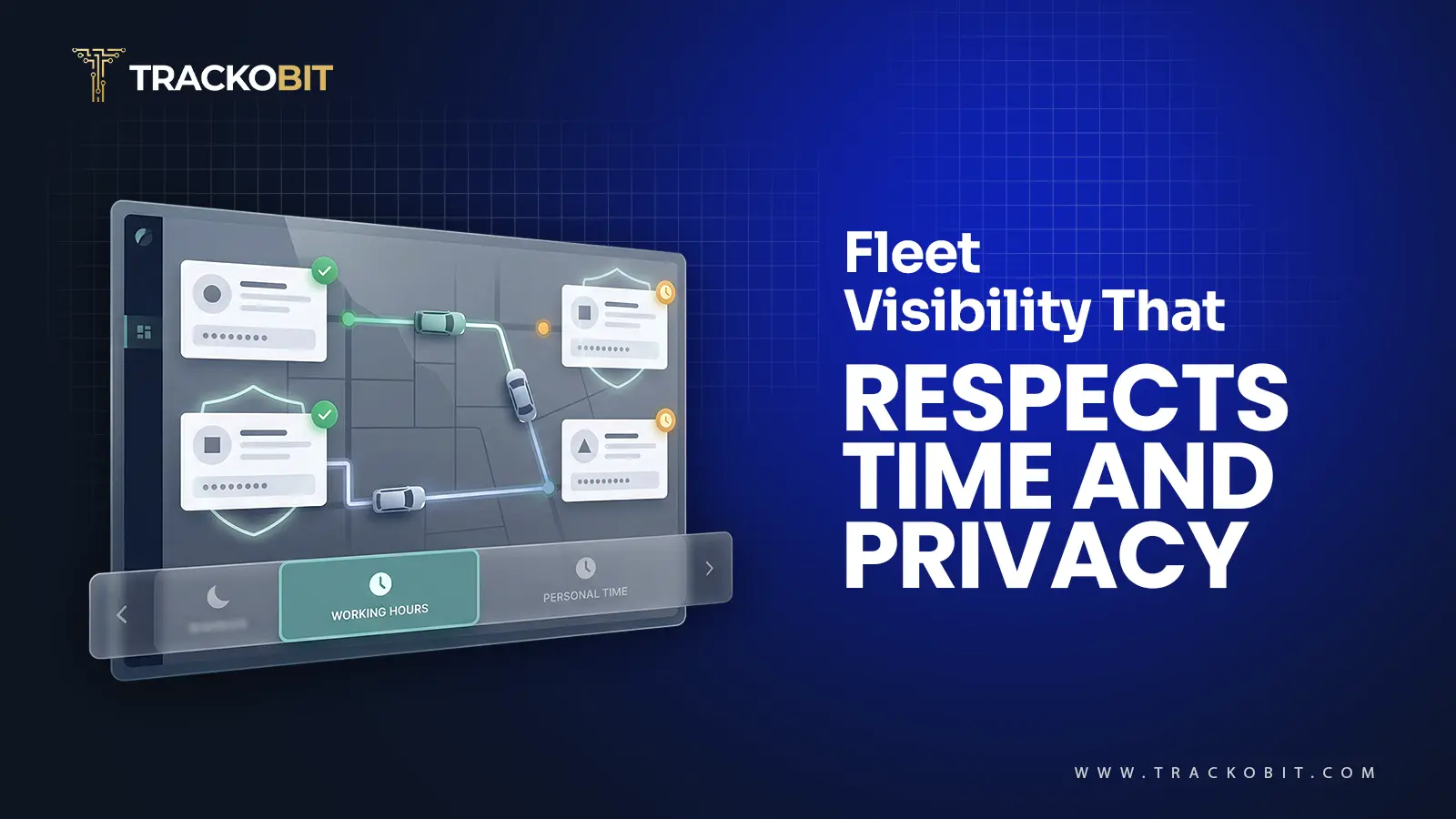-
TrackoBit
Manage commercial vehicles with the new-age Fleet Management Software
TrackoBit -
TrackoField
Streamline your scattered workforce with Field Force Management Software
TrackoField -
Features Resources
-
Blog
Carefully curated articles to update you on industrial trends. -
White Paper
Insightful papers and analysis on essential subject matters. -
Glossary
Explore an alphabetical list of relevant industry terms. -
What’s New
Get TrackoBit & TrackoField monthly updates here. -
Case Study
Explore the cases we solved with our diverse solutions. -
Comparisons
Compare platforms, features, and pricing to find your best fit.
-
About Us
Get to know TrackoBit: our team, ethos, values, and vision. -
Careers
Join the most dynamic cult of coders, creatives and changemakers. -
Tech Support
Learn about our technical support team and services in detail. -
Events
Check out the exhibitions where we left our marks and conquered. -
Contact Us
Connect with us and let us know how we can be of service.
Fleet Management Software Can Help Healthcare Industry
- Author:Drishti Dua
- Read Time:9 min
- Published:
- Last Update: December 9, 2025
Table of Contents
Toggle
Fleet management software can play a huge role in optimising the healthcare industry fleet businesses. This includes the challenges faced by both the ambulance and cold-chain fleets.
Table of Contents
Toggle
When we talk about the healthcare industry, our immediate thought is about the lives that depend on its operations. It is because so much is riding on this industry that makes studying about healthcare fleet management necessary.
Healthcare fleets can be divided into two major parts – Ambulance and cold chain fleets for pharma related transportation. Having this segregation means that there are two separate sets of challenges that this industry needs to solve simultaneously. But how?
By investing in a fleet management system!
Let us see how this software is capable of transforming medical fleet business operations.
Ambulance Management
When we think of healthcare fleets businesses, the first thing that comes to our mind is the ambulances running on the roads with blaring sirens. In a way, this siren can be seen as a symbol of time sensitivity. Vehicles responsible for bringing patients to and fro hospitals are of no use if they cannot do this in time for life preservation!
Several issues plague an ambulance fleet, some related and some unrelated to its time constraints. Let us look at ways a fleet management system can solve all the problems your business might be facing:
Problem 1: How can I decide which ambulance to send in emergency situations?
When managing a large fleet, keeping track of ambulances’ locations manually is a task next to impossible. This is why a lot of managers face problems deciding which ambulance is the closest to the patient’s location and can reach it quickly. If only there was a way for them to see the real-time location of all the ambulances at one time.
Wish granted then! Because of course, the fleet management system has a way to mitigate this issue as well.

The GPS tracking system allows managers to see the live location of their vehicles. This means they can see which driver can reach the desired destination quickly. Dispatching ambulances backed by such information can not only make the process efficient but can also eliminate tragedies due to delays.
Problem 2: It is very hard to communicate with ambulance drivers and inform them of the routes best suitable
Lack of communication is a very commonly observed issue in an ambulance network. But managers must look for ways that help their drivers connect to the managers better, especially when it comes to factors like deciding routes. But manually deciding routes, regardless of who does it – the driver or the manager – can be time consuming. And time is not something they can afford.
A fleet management system is a wish granting angel for situations like this! How can it not be? With solutions like route planning solutions, it can help managers ensure timely that patients can travel quickly. But what features specifically aid this process? Let us have a look
- Trip Planning: When a driver is driving toward/from an emergency location, they want to look for a route that will take them to their destination the fastest. But this can consume a lot of time. This is why trip planning solutions allow managers to add in the stops and create a route.
- Geofences: Once it is decided what route is right for the vehicle, managers can mark a virtual boundary some distance away from the hospital. This means that as soon as the vehicle reaches this area, the hospital can ensure they are ready to receive the patient.
- ETA: As an alternative to setting up a geofence, managers can also keep surveillance over their ambulance’s ETA. They can make proper arrangements for a patient’s transfer from the ambulance based on this information.
Problem 3: My ambulance’s downtime is affecting my fleet’s ability to transport patients efficiently
During the Covid-19 pandemic, we experienced first hand how the shortage of ambulances is a fatal situation. When talking about a healthcare fleet business, this situation can also mean less productivity and eventually the loss of goodwill. But how can you as a fleet manager ensure that a vehicle stays in good condition with the least amount of downtime?
Having a maintenance schedule is always a good start. And using the vehicle tracking system to stick to this schedule is the best following step.
The servicing and maintenance feature of the fleet tracking software allows managers to schedule vehicle check-ups in advance. Alerts remind them of these checkups before the date approaches. Preventive maintenance ensures that no issue, big or small, escalates to the point of ambulance breakdown. On the other hand, corrective maintenance helps restore the ambulance in case it does start facing an issue.
Problem 4: How can my healthcare drivers alert the hospital if they encounter an unforeseen obstacle on the road?
An ambulance that travels on the road is also vulnerable to situations like road accidents, vehicle breakdowns, and so on. But how will they alert hospital staff of such situations instantly so that other arrangements can be made to cover their tasks? An emergency button can help! It will immediately let the managers know that the vehicle is in some situation.
Some circumstances that might require the emergency button include accidents, flat tires, traffic congestion, and so on. Managers can investigate the situation and dispatch another vehicle for the task in case the intended ambulance is stuck. Thus, the hospital does not have to compromise its services due to some unavoidable circumstances.
Under the AIS 140 mandate for fleet businesses implemented by the Indian government, having an emergency button has now become a necessity. This means that there is a new wave of healthcare fleets looking to invest in GPS tracking systems.
Cold Chain Management
The healthcare industry fleet goes way beyond simple patient transportation. It also includes transporting medical goods/equipment, and medicine or vaccines. But this presents a set of issues varying from ambulance management. The biggest challenge is the transportation of temperature-sensitive vaccines and medicines.
Cold chain temperature transportation is a method often used in the pharmaceutical industry. It is when reefers are used to transport consignments in the desired temperature conditions. But how can managers ensure that their reefers operate at the right temperature? A million-dollar question indeed!
We receive several questions related to the cold chain from our clients as well. Let us look at the solutions to these problems:
Problem 1: My cold-chain fleet has a very high wastage rate.
Cold-chain transportation sounds complicated on paper. But trust us when we tell you, manually managing such a fleet is even harder!
Imagine you have to supervise the reefer for proper temperature control. Thus, drivers have to stop their vehicles and manually check if the reefer is at the right temperature or not. This not only breaks their concentration on the road but also wastes their time. But without such measures, the medicines and vaccines might go bad, leading to heavy losses.
Sensor integration is the answer to such issues. Some sensors that can be useful for temperature control are:
- Thermometers: With the help of thermometers, managers can remotely supervise the real-time reefer temperature. Thus, as soon as it exits the desired temperature limit, managers will receive alerts. Drivers do not have to stop vehicles repeatedly just to monitor the temperature, boosting their overall productivity.
- Door Sensors: Door sensors ensure that the reefers are nicely sealed, preventing sudden fluctuations in the temperature due to external factors.
- eLocks: Integrating eLocks into the system means that businesses do not have to worry about theft. Managers can lock their vehicles upon detecting suspicious activities. Thus, they can preserve expensive or regulated vaccines and medicines.
Problem 2: My fleet is proving to be a money guzzler, negatively affecting my budget.
Controlling a cold chain supply chain is as stressful as it is costly. The very step of investing in reefers can cost fleet businesses a lot. Thus, the maintenance of these machineries also ends up being a very high sum. But there must be a way to battle these costs right? Yup, the fleet management system has all the help you might need.
- Service and Maintenance: When the vehicles stay in good shape, fleet businesses can cut down on the expenditures on their repairs. As they say, a stitch in time saves nine. Similarly, spending small amounts on vehicle check-ups reduce the heavy cost of corrective maintenance or vehicle replacement in worse case scenarios.
- Driver Behaviour: A major contributor to the vehicle’s wear and tear is the driver’s on-road habits. Harsh driving can depreciate the engine and tyres of the vehicles, requiring regular replacement. Doesn’t sound very economical, does it? This is why driver behaviour monitoring solutions help detect and reduce such bad driving practices.
- Shrink Rate: Mismanagement during transportation is a high cause of monetary losses. After all, it is the fleet business that will have to pay compensation for the vaccines and medicines that go bad. This is why the sensor integration we learned about in the previous section proves to be beneficial to the fleet business as well.
Read Blog – ways to budget your fleet business

Problem 3: How can I reduce my fleet’s fuel consumption?
With fuel rates fluctuating, deciding a final budget for a fleet’s fuel expenditure is next to impossible. Not only is fuel price unpredictable, but so are the factors affecting a fleet’s consumption. While fuel rates are out of control for any fleet owner, they can help regulate their budget by working on their fleet’s consumption and wastage.
A fuel monitoring system is a manager’s best friend for this reason. It helps them understand the operations that might be leading to higher wastage, thus opening ways of optimisation. Some features that aid this process are:
- Fuel Refill/Drainage Alerts: Managers receive alerts every time a fuel tank experiences sudden appreciation or depreciation in fuel level. Thus, reducing any chance of pilferage directly from the tank. It also helps detect any tank leakage that might be contributing to fuel wastage.
- Multi-dimensional Reports: Reports are responsible for highlighting what fleet operations are negatively affecting its fuel consumption. This can be due to the driver’s on-road activities like idling and overspeeding, or the vehicle’s low maintenance. Managers can study these reports and create strategies to reduce this consumption rate.
- Real-time Tracking: When managers have access to the real time fuel levels of their vehicles, drivers are way less likely to indulge in any wasteful activity. This conscious effort to reduce fuel consumption/wastage goes a long way.
Problem 4: It is difficult to incorporate several stops in a single transportation route
Manual multi-stop route planning is nearly impossible to do. Do not believe us? Let us try to visualise a situation related to this scenario.
You as a manager have to plan a trip that includes five different dealers. Your trip needs to not only prioritise specific dealers but also needs to adhere to the time-sensitivity that comes with this industry. So you have no option but to use a map and pre-decide the routes, simultaneously predicting which routes will be efficient considering factors like traffic congestion, road conditions, and route length.
Chaotic right? The window to errors and flaws is too huge with manual management. This is why incorporating technological aid right at the planning stage is extremely important. Route planning system proves beneficial for this kind of fleet operations as well. It helps managers plan multi-stop trips with ease, boosting time efficiency and reducing careless errors.
Coming to an End
Healthcare fleet businesses have to constantly ensure that no error on their part affects the lives relying on them. Be it ambulance fleets for helping patients, or cold-chain fleets transporting vaccines and medicines, both are as important as they are difficult to manage. But a fleet management system can help reduce these challenges.
TrackoBit is one of the leading fleet management software in the market. Businesses from all kinds of industries already trust TrackoBit to help them become both efficient and profitable. Do not believe us? Try out a demo and witness the optimisation yourself!!
Drishti Dua, a Content Contributor at TrackoBit has a rich background in literature and professional expertise in SaaS and technology writing. She has carved her niche in the space of Geospatial techn... Read More
Related Blogs
-

When Tracking Needs a Clock: Rethinking Fleet Visibility
Tithi Agarwal December 24, 2025Read on to understand why fleet tracking works better when it follows working hours. Because visibility should support operations, not…
-

What Makes TrackoBit’s Video Telematics Software Truly Next-Gen?
Shemanti Ghosh December 17, 2025TrackoBit’s video telematics software blends smart video intelligence with full server control. The result? Superior fleet reliability and safety.
-

Plug, Pair, Perform TrackoBit Introduces BLE Sensor Integration
Tithi Agarwal November 26, 2025TrackoBit’s BLE Sensor Integration enables wireless, real-time monitoring with faster installs and accurate insights. It improves fleet efficiency, visibility, and…
-

How to Use Driver Behavior Reports as a Sales Hook to Close Big Fleets
Tithi Agarwal October 16, 2025TrackoBit’s driver behavior reports empower fleet providers to win big contracts by showcasing safety, efficiency, and measurable ROI.

Subscribe for weekly tips to optimize your fleet’s potential!
Your inbox awaits a welcome email. Stay tuned for the latest blog updates & expert insights.
"While you're here, dive into some more reads or grab quick bites from our social platforms!"Stay Updated on tech, telematics and mobility. Don't miss out on the latest in the industry.
We use cookies to enhance and personalize your browsing experience. By continuing to use our website, you agree to our Privacy Policy.


































